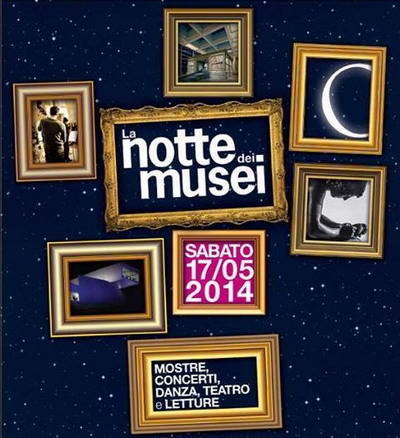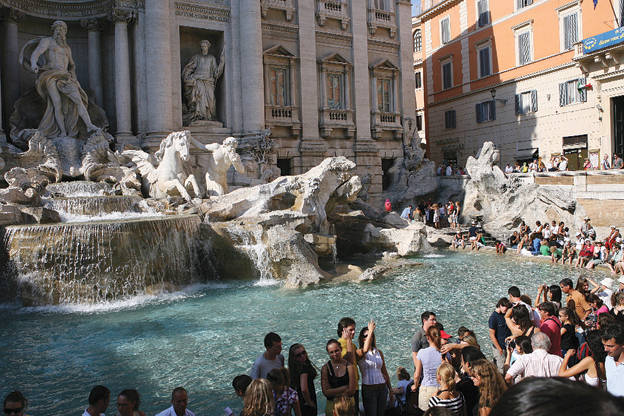As Tourists Arrive, Roman Museums Struggle
ROME – The tourists are back, to the delight of Roman restaurateurs and hotel and shop keepers. But investments in the cultural heritage are neglected, and a chronic shortage of funds and personnel means that museum directors are not part of the celebration.
“You can’t hope for tourism, and then close the very places that are the real worldwide attractions,” Adriano La Regina, president of Italy’s National Institute for Archaeology and Art History, protested in an op-ed piece for the daily La Repubblica. But is tourism the cure? Not everyone agrees.
The 1.3 million international visitors who flooded into Rome in April were there in part – but only in part -- thanks to what the Italian press calls the “Bergoglio effect,” for the fascination exerted by Pope Francis. And indeed a large percentage of the tourists in Rome this Spring come from Latin America, and especially the pope’s native Argentina. From wherever they come, it is particularly good news because, with only 46.4 million visitors in 2012, Italy had slumped to fifth place as a favorite tourism destination. France, the favorite, was first with 83 million. This was considerably more than its population of 66 million, and almost twice as many international tourists as visited Italy. After France came, in descending order, the U.S., China, and Spain, which beat Italy by some 13 million more visitors.
Curiously, even Milan had more overnight visitors, 6.83 million, than Rome, 6.71 million that same year even though Rome is larger. If the museums of Rome are part of the action and attraction, as they should be, the problem is that they are struggling to keep their heads above water.
It made worldwide news when a reporter wrote (not entirely accurately) in May that the Borghese Museum collections were at risk because of problems with air conditioning. Despite the difficulty of air conditioning an centuries-old building, that problem is being resolved. However, the less well known but beautiful Galleria d’arte Moderna is closed until June 10, and three other museums -- Roman Civilization, the Planetarium and the Museum of Astronomy -- are closed “until the termination of requalification work,” aka maintenance work and improvements.
The problem hit the news when it was announced that during this May’s sixth annual Notte dei Musei, when museums remain open late at night and for free, the Coloseum would be closed. “It’s because our institutions are in deep trouble,” said La Regina. “They are short of personnel -- not only custodians but also for the people in charge of protecting the territory and for conserving monuments. Museum custodians are at a minimum. Even though the try hard, always, to maintain a sufficient level for visitors, but one can’t expect them to do more.”
The disaster also involves research institutions, he added. “It’s illogical. While people invoke the positive results that could come from increasing tourism, the same people shut down the very places that make Rome a worldwide attraction,” said La Regina.
But is tourism the cure? This was among the subjects debated at the Turin Book Fair, the Salone del Libro, where Dario Franceschini, Minister of Cultural Heritage and Tourism, spoke in a symposium with archaeologist Salvatore Settis, art historian Tomaso Montanari and Roberto Napoletano, editor of Il Sole-24 Ore. “Culture is the richest capital we have,” Napoletano began. Settis’s response was acid: “We all talk about our wonderful heritage, and from saying this we assume we ought to receive something from that heritage. It’s like consoling an unhappy child by saying, ‘Well, you’ll make a nice marriage.’ But we have to save ourselves, by ourselves, by asking what our heritage means to us, not others. Beauty will save us if we save beauty.” The cultural heritage and historic landscape are not merely money makers, he concluded. “Tourism is fine, but let’s recall that the heritage is ours and for us. It is our culture.”
According to a Eurostat report in March 2013, Italian expenditures on maintaining its heritage amounted to a mere 1.1% of its GNP as compared with the 2.2 average for the rest of Europe. This places Italy at the very bottom of the list of those European states protecting, and investing in, their cultural heritage. Even Greece, the second worst at 1.2%, invests more. France spends double what Italy does, 2.5%, and the UK, 2.1%. Italian experts say that massive tax evasion is one reason for the cuts to the cultural budget. Another is petty corruption which imitates, and is legitimized by, that on the high level.
But it is not only about money. Organizational skills are in short shrift, and good managers are in short supply. What is to be done? First, the problems must be clearly spelled out. And to the extent that Italy's is indeed the heritage of the entire world, pressure and interest from the world beyond Italy will not hurt.






































i-Italy
Facebook
Google+
This work may not be reproduced, in whole or in part, without prior written permission.
Questo lavoro non può essere riprodotto, in tutto o in parte, senza permesso scritto.